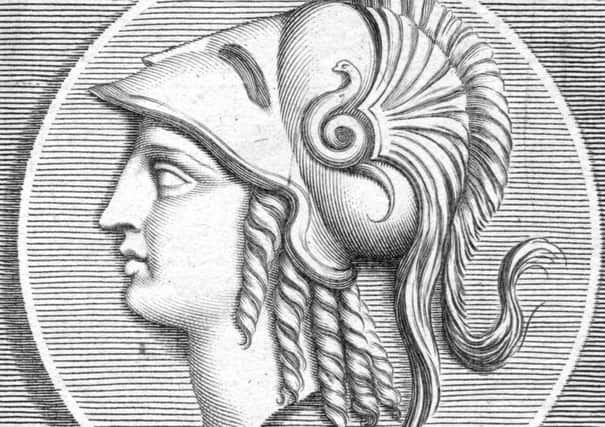Expert casts more light on mystery of Greek burial


Geologist Evangelos Kambouroglou also said that the mound inside which the rooms and the tomb were found is not man-made, as archaeologists had assumed, but a natural hill.
He also said that the Lion of Amphipolis, a huge sculpture of a lion on a pedestal, which is more than 25 feet tall, was too heavy to have stood at the top of the tomb, as archaeologists had claimed.
Advertisement
Hide AdAdvertisement
Hide Ad“The walls [of the tomb structure] can barely withstand half a ton, not 1,500 tons that the lion sculpture is estimated to weigh,” Mr Kambouroglou said.
As for the box-like tomb that contained the remnants of five bodies, possibly more, “it is posterior to the main burial monument ... the main tomb has been destroyed by looters, who left nothing,” said Mr Kambouroglou. “The marble doors [of the monument] contain signs of heavy use, which means many visitors came and went.”
The vaulted rooms had been dated to between 325BC – two years before the death of Greek warrior-king Alexander the Great – and 300 BC, although some archaeologists had claimed a later date.
Katerina Peristeri, the chief archaeologist in the recent excavation, had advanced the theory that a member of Alexander’s family, or one of his generals, could be buried in the tomb. But the discovery of the boxy grave and the five bodies cast doubt on that theory and Mr Kambouroglou’s announcement appears to disprove it entirely. Some archaeologists present during the announcement criticized Ms Peristeri’s absence and her methods.
Alexander, who built an empire stretching from modern Greece to India, died in Babylon and was buried in the city of Alexandria, which he founded. The precise location of his tomb is one of the biggest mysteries of archaeology.
His generals fought over the empire for years, during wars in which Alexander’s mother, widow, son and half-brother were all murdered – most near Amphipolis.
Although archaeologists have been excavating the site since 2012, they only found the opening to the tomb in August 2014. In November of that year, archaeologists found bones beneath the floor of the third chamber in the 4th-century BC burial complex, which is located about 65 miles from the modern-day city of Thessaloniki.
All in all, researchers have so far uncovered 550 crushed and intact bones in the tomb. Some of those bones belonged to animals, including long bones from horses, according to recent reports.